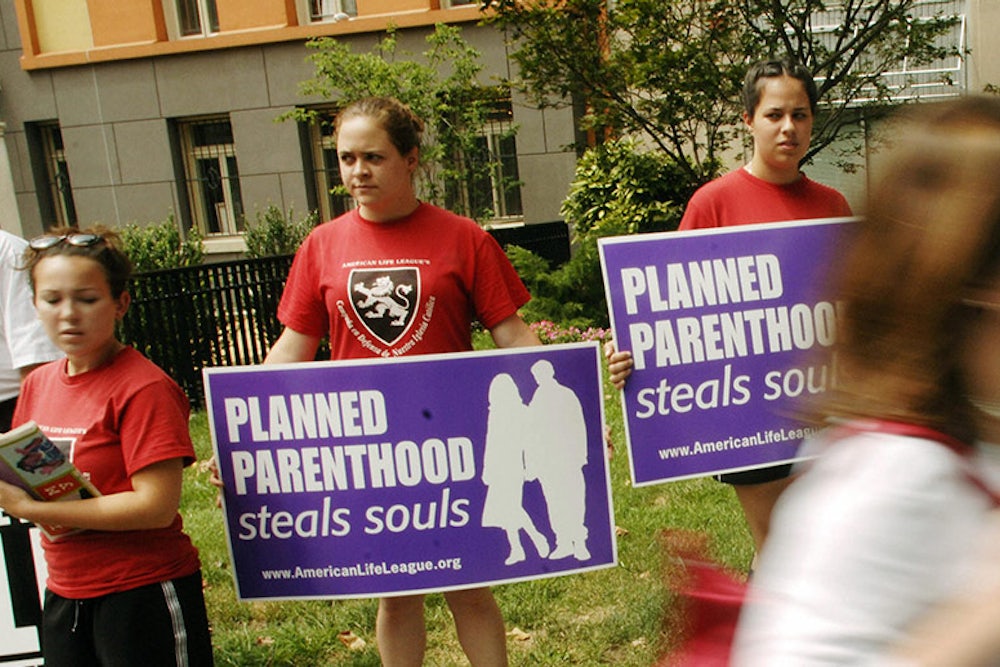When laws restrict speech, states must use a scalpel, pursuing narrow goals while causing as little damage as possible. Today, a unanimous Supreme Court decided that a Massachusetts law mandating buffer zones around abortion clinics was pretty much a hammer. But the real loser in today’s decision is not Massachusetts, nor is it even abortion activists. It’s the police.
Before turning to the loser in today’s blockbuster decision, McCullen v. Coakley, we must begin with the winner. Ellen McCullen is not your stereotypical abortion protestor. In fact, according the Chief Justice John Roberts’s majority opinion, she’s not a protestor at all. Instead, she is a “sidewalk counselor” who approaches those walking into abortion clinics with a “caring demeanor, a calm voice and direct eye contact” and politely asks, “Good morning, may I give you my literature?” The 77-year old mother and grandmother who stands at 5'1" with a body that she describes as “plump” is completely non-threatening. The assumption is that Massachusetts has no legitimate reason to ban her from a public sidewalk.
But beyond this point of general consensus, things get hairy. For decades, states have passed laws designed to prevent “clashes” between advocates outside of abortion clinics and to protect those entering clinics from obstruction and impediment. Some of these laws created legal “bubbles” near abortion clinics that proscribed people from approaching within six feet of one another for the purpose of any sort of advocacy. But although these bubbles were upheld under Hill v. Colorado, some states, such as Massachusetts, have found them difficult to enforce in practice. Imagine being the police officer authorized to arrest those who pass within six feet of one another for a specific purpose. What do you do, run around with measuring tape? The image calls to mind faculty chaperones armed with rulers at school dances.
Presented with the problem of unenforceability, Massachusetts developed a novel solution in 2007. Instead of legislating moving bubbles, the state simply banned anyone from entering or remaining on any public way or sidewalk within 35 feet of clinic entrances (with specific exemptions made for clinic employees, patients, municipal workers, and anyone traversing the road to actually get somewhere). The intention was to create an easily enforceable way of restraining protestors and ensuring open access; but McCullen and her fellow sidewalk counselors got swept up in the process. Forced to remain dozens of feet from clinic entrances, these counselors have found their conversations severely hampered. With the new law, it became much harder for McCullen and her friends to identify the proper people to approach. And on reaching the painted arcs in the street, they were forced to peel off within seconds of first making contact. Her free speech had been curtailed in the interests of public order.
Of course, curtailing free speech in the interests of public order isn’t itself a problem. For years, the courts have permitted restriction on free speech as long as such restrictions are “content-neutral” (i.e. what you speak about shouldn’t matter) and “narrowly tailored” (i.e. the laws should ban as little speech as possible to accomplish their goals). On Thursday, the majority of the Court rejected arguments that the buffer zone discriminated on the basis of content (over the vociferous objections of Justice Scalia), but did hold that the restrictions were overly broad. Put simply, Massachusetts could have prevented protestors from blocking and intimidating patients without also exiling Ellen McCullen halfway down the block. In the words of the Court, the buffer zones “burden substantially more speech than necessary” to achieve the goals of free access and public order. And to prove it, the Roberts’s majority opinion provides a litany of alternative laws and potential approaches that could accomplish these same goals while still allowing McCullen to continue her conversations.
In the aftermath of today’s ruling, it seems inevitable that states will turn to alternatives of the sort that the Supreme Court suggested today. Rather than state-wide buffer zones, we will see clinics and local governments seeking targeted court orders. Police will try to make do with local anti-congestion and anti-harassment ordinances, and in particular circumstances, individual clinics will pursue narrowly crafted injunctions—perhaps even renewed buffer zones. But the enforcement approach will necessarily be piecemeal, and a significant burden will be shifted to police to determine precisely who is causing a disturbance and when an entryway is being obstructed. More police will be needed and more judgment and training will be necessary. But what does the Court make of this burden? Not much, apparently. As Roberts wrote, “a painted line on the sidewalk is easy to enforce, but the prime objective of the First Amendment is not efficiency.” We’ve heard the arguments and seen the evidence, the Court told police, and we know you could make do with less.
Traditionally, the courts defer to legislatures when determining how best to equip law enforcement to do its job. But today, the Court took a step back from that tradition, elevating its own judgment over that of local officials. Given the unanimity of the decision, perhaps the justices were right to do so. But coming just one day after prohibiting police from examining the phones of arrestees, today’s decision must sting in law-enforcement circles. For the second day in a row, the Court has told cops they must work harder.
